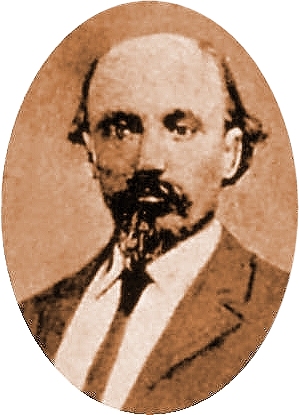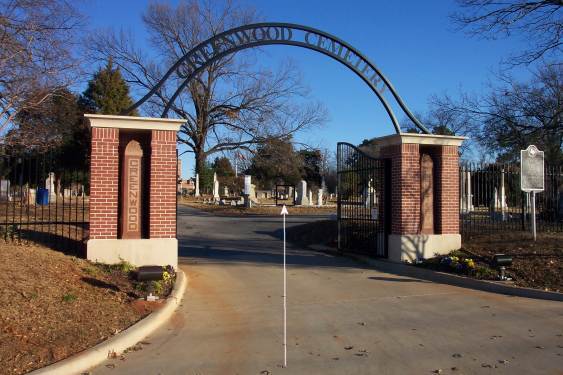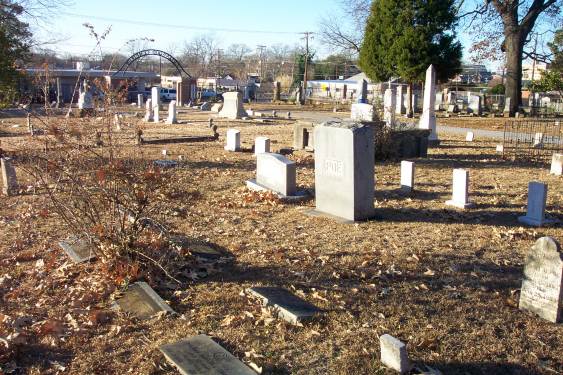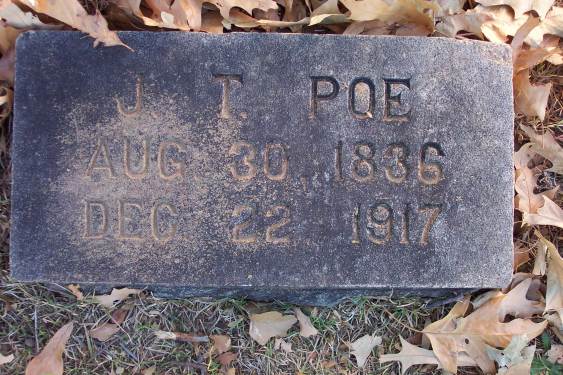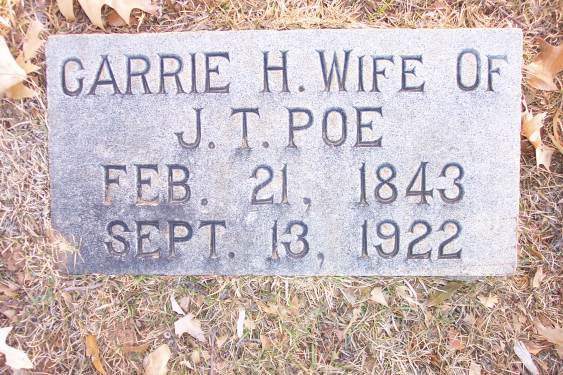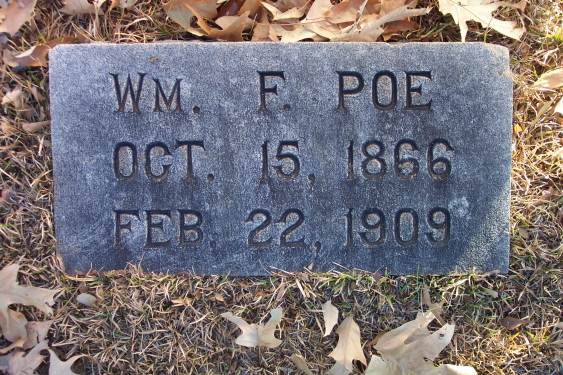John Thomas Poe
1836-1917
Ligon Portraiture Picture
Brief Sketch On The Life Of John T. Poe
John T. Poe was born in Tuscaloosa, Alabama, August 30, 1836. He was the son of Larkin C. and Rachel Harrington Poe of Chatham County, South Carolina. He was said to have been one of the pioneer preachers of Texas, who came into the vineyard at the third hour, and helped to bear the burden and the heat of the day. He lived and worked for years in central and east Texas. He helped to strengthen the churches at Corsicana, Dallas, San Marcos.
He was 25 years old when the Civil War broke out. He volunteered for service, reaching the position of Corporal in Company F, of the 4th Regiment of Texas Volunteers. He, along with other pioneer preachers like B.F. Hall, and Gen. R.M. Gano, did their part in fighting for the cause of states' rights.
After the war he served a number of years he served as Texas editor of the Gospel Advocate, and wrote for other papers as well, including the Firm Foundation.
In 1874 the church in Longview was organized. Poe was the minister. Until 1884, the congregation did not use the instrument in their worship services. Poe opposed its entrance. It was not until 1895 that the instrument was added under the influence of L.A. Dale. Poe, along with 25 others, left the group to form a congregation after the simple New Testament order. Heartbroken, he ended up leaving for a few years, but returning in February, 1900. The church of Christ in Longview increased under his influence.
Through his writings, and personal trips to struggling churches, he fought against the additions of the instrument into public worship assemblies. He also fought against the Missionary Societies. In 1899 he helped to have the instrument removed from the church house at Dawson, Navarro County, Texas. He wrote articles in the Gospel Advocate, and other papers encouraging brethren to stay and fight for their buildings rather than give them over to those who wanted to bring the instrument into the assembly. When efforts to reunite with brethren who had added the instrument, he opposed it saying that decisions of whether to use or not to use instruments in worship had to be decided on the congregational level, and not through a state run meeting.
He organized a number of churches including the Christian church at Wills Point, Van Zandt County, in 1886.
He passed from this life December 23, 1917, and was buried in the Greenwood Cemetery in Longview, Texas. Buried beside him are his wife Carrie, and his son William.
-Sources: Texas Pulpit by Christian Preachers, The History of the Catoma Street Church, Gospel Advocate; Firm Foundation Vol 35, No. 1 Jan. 1, 1918;
More On Poe's Activity In Alabama
JOHN T. POE
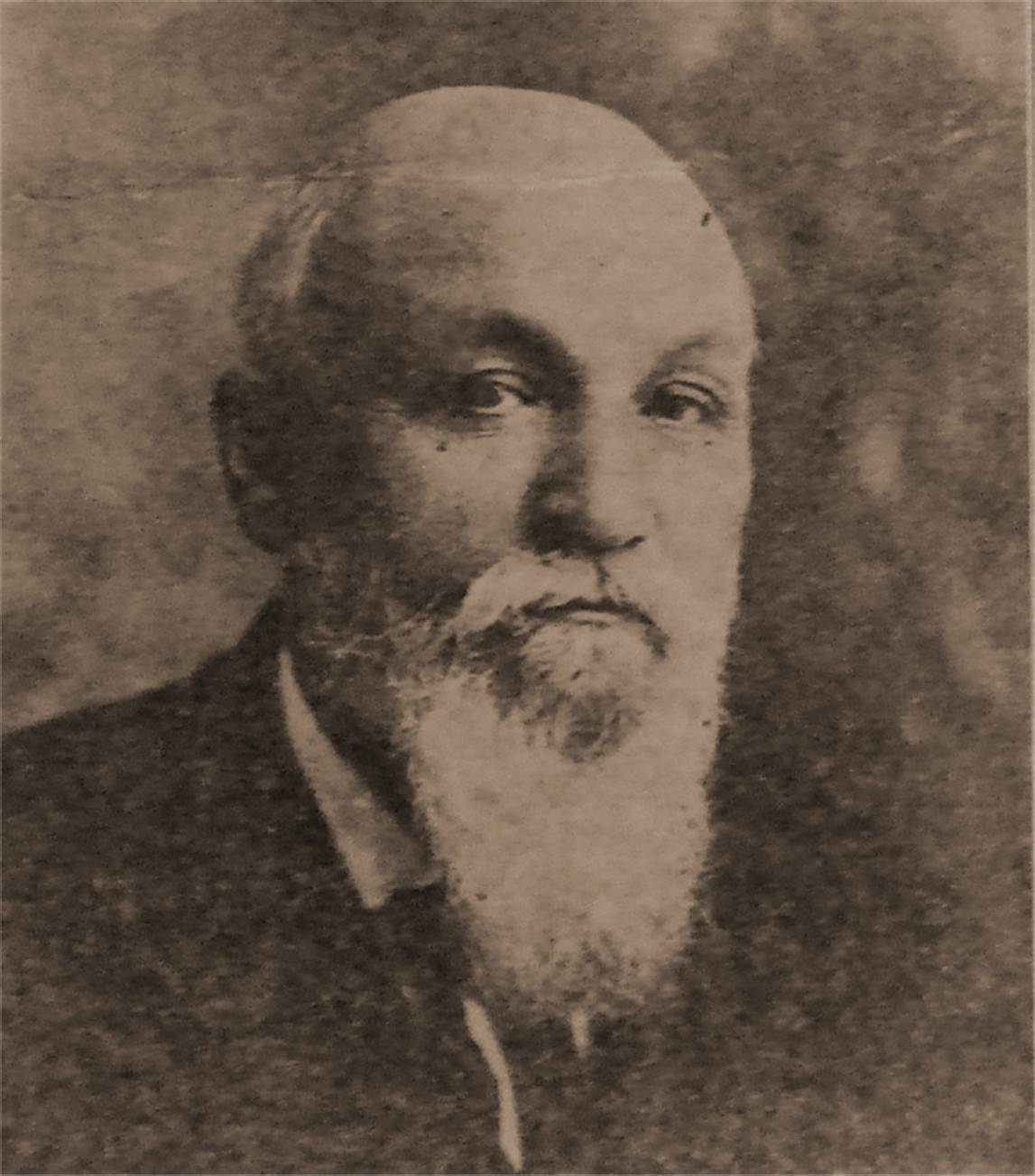 The subject of this sketch illustrates the power and
influence of Christianity on a life. Wonderful are the blessings of
Christianity. It can take one from the lowly walks of life and exalt him to the
honorable station of a preacher of the gospel; it can take one from poverty and
obscurity and place that one amidst the wealth and inheritance of the blessings
of God on earth; it can take one from ignorance and simplicity and instruct that
one in the wisdom from above; it can take one who is idle and useless and make
that one a servant of the many; it can take one from the lowly depths of sin and
make that one an honor add glory to God on this earth. We have all of this and
more illustrated in the life and character of John T. Poe.
The subject of this sketch illustrates the power and
influence of Christianity on a life. Wonderful are the blessings of
Christianity. It can take one from the lowly walks of life and exalt him to the
honorable station of a preacher of the gospel; it can take one from poverty and
obscurity and place that one amidst the wealth and inheritance of the blessings
of God on earth; it can take one from ignorance and simplicity and instruct that
one in the wisdom from above; it can take one who is idle and useless and make
that one a servant of the many; it can take one from the lowly depths of sin and
make that one an honor add glory to God on this earth. We have all of this and
more illustrated in the life and character of John T. Poe.
John T. Poe was born on August 30, 1836, in Tuscaloosa, Ala. He was reared in the midst of poverty and obscurity. When he was one year old, his parents moved to Texas in the early days of the history of that great State. They settled on a farm in Polk County. There was a large family of boys and girls, and John T. was the oldest of the children. He was reared to know the dangers and hardships of frontier life in that country. All the members of the family had to work hard, and enjoyed but scant opportunities for an education. Neighbors were few, and there were very few opportunities for social intercourse at that time. Young Poe spent six days in the week working on the farm and had no opportunities for cultural advantages.
John T. Poe early in life developed an ambition to know more than could be gathered from the prosaic and ordinary routine of farm life and a community of simple folk. He read and studied at night while others were asleep. At the age of eighteen he took a contract to carry the mail from Livingston, in Polk County, Texas, to Huntsville, in Walker County. For several years he made this trip on horseback, and he seldom ever missed carrying the mail. The weather was never too inclement nor the dangers too hazardous to prevent his making the trip. He met a Mr. Winnie in Huntsville and engaged with him to learn the business of watchmaking. He applied himself diligently to his task and soon became very proficient in this business. After learning his trade he formed a partnership with Mr. Winnie, and continued in this business with his partner until the Civil War. His partner, Mr. Winnie, was a Union man, and he was forced to flee to the Northern States, whence he came. Brother Poe was about twenty-five years old when the war began, and he enlisted in the war and continued until the close. He was wounded severely at the battle of Gloretta, in New Mexico; was taken prisoner in Santa Fe and retained as a prisoner several months; was parolled there and returned to Texas; reentered the army and remained in active service until the end of the war.
Young Poe had joined the Methodist Church before the war began. He was faithful to that church during the time he served in the army. He read the New Testament while a soldier and became dissatisfied with sprinkling as baptism. He determined to take the New Testament and follow it. He appealed to a Methodist preacher to immerse him, but the preacher refused. He next went to a Baptist preacher and stated his case. At that time he had learned only the mode of baptism. His attention had not been called to the church of the New Testament. The Baptist preacher gladly received him and baptized him. For several months he was happy in the Baptist faith. He continued to study the New Testament. One day he heard a Baptist preacher preach on the "final perseverance of the saints." He did not understand the sermon, but it disturbed him. He read the New Testament to learn what was taught on that subject. While studying the New Testament he learned more about baptism, and was ever ready to engage in conversation with any one who would talk with him on religious subjects. He soon became very skillful in arguing his position. However, he always had an open mind and a love for the truth. He had a good friend in H. C. Wright. These two studied the Bible together, and they made a team in arguing the different points stressed by the different denominations in that country. His friend, Mr. Wright, married a young lady who was an active member of the body of Christ. He and his wife agreed to attend church with each other, going to "her church" in the morning on Sundays and to "his church" at night. Soon his friend learned the truth and as readily accepted it. He talked over all of the points with John T. Poe, and they both saw the truth about the same time. Young Poe thought that by continuing in the Baptist Church he would be able to influence some of the younger members to accept the truth with him. Some of the older members of the Baptist Church took a very decided stand against young Poe, and he stoutly contended with them for the truth and against the errors maintained by the Baptist Church. This continued for some months. Finally the Baptist Church withdrew from him because he was a "factionist" and had espoused heresy.
Brother Poe left the Baptist Church in 1870 and soon began preaching the gospel. When he left the Baptist Church, he was so persecuted that he was forced to justify himself in what he had done. He was careful not to accept anything that he could not find in the New Testament. He learned so well what he read in the New Testament that he was able to present it with clearness and force against any one who could be found bold enough to dispute with him. In this way he became a public pro-claimer of the gospel. He continued to work at his business, repairing watches, and preach as he had opportunity. He began to make appointments in adjoining counties, and soon he had calls sufficient to keep him busy. His services were in great demand, and he was successful from the beginning as an evangelist. He was so interested in preaching the gospel that he neglected his business. Preachers were supported with very little in those days, and he had a hard time in making a living for his family. In 1880 he was called by the church at Longview, Texas, to come and labor with it. He moved his family to that place and devoted all of his time to preaching the gospel. He soon received calls from many points in Northeast Texas and preached all over that section of the State. He was instrumental in starting mar y churches and strengthening and edifying others. He received calls from other States and made extensive tours through Tennessee, Alabama, and Mississippi.
Brother Poe was a good writer. He wrote much for the religious papers. He was clear in expressing himself, and his writings were read by thousands. He did not claim to be a profound reasoner, and yet he was logical in the presentation of his subjects, both in oral and written teachings. He had a number of debates, and he was always able to meet successfully his opponents. He knew the Bible and could present its teaching with force and simplicity. He was just such a preacher of the gospel that the common people heard him gladly. Brother Poe made many sacrifices for the truth. He struggled through poverty in his early life and continued the struggle to the end.
He died at his home in Longview, Texas, December 23, 1917. His body was laid to rest in the cemetery there. Brother Poe said as the end grew near: "I have fought the fight, but have not always made as good a fight as I might; but I have kept the faith." Many today are still rejoicing because he helped them to see the truth.
-From Biographical Sketches Of Gospel Preachers, H. Leo Boles, Gospel Advocate Company, Nashville, Tennessee, 1932, pages 281-285
Directions To The Grave of John T. Poe
From Dallas: John T. Poe is buried in Longview, Texas, in the Greenwood Cemetery. If traveling from Dallas, take Exit 589 off I-20, and head seven miles north. Follow Hwy. 31 north to Hwy. 80E. Go 4 or 5 traffic lights and look for the hospital. The cemetery is behind the Good Shepherd Hospital. Just past the hospital, turn right on N. 5th St. and the north end of the cemetery should be at the corner of Paden St. & N5th. However, the entrance should be one block further down on E. Magill Street. The address is 705 E. Magill St.
From Shreveport: Heading west on I-20. Take Exit 596 and head north on Hwy. 259/149 (S. Eastman St.) Turn left on E. Marshall Ave. (Hwy. 80) and just before the hospital, turn left on N. 5th St. and the north end of the cemetery should be at the corner of Paden St. & N5th. However, the entrance should be one block further down on E. Magill Street. The address is 705 E. Magill St.
GPS Coordinates
32°29'52.6"N 94°43'51.0"W
or D.d. 32.497942,-94.730835
8th Addition / Section B/ Lot 10
Cemetery Map Showing Location Of Kearley Monument
J.T.
Poe
Aug. 30, 1836
Dec. 22, 1917
Carrie
H. Wife Of
J.T. Poe
Feb. 21, 1843
Sept. 13, 1922
Wm. F. Poe
Oct. 15, 1866
Feb. 22, 1909
![]()
